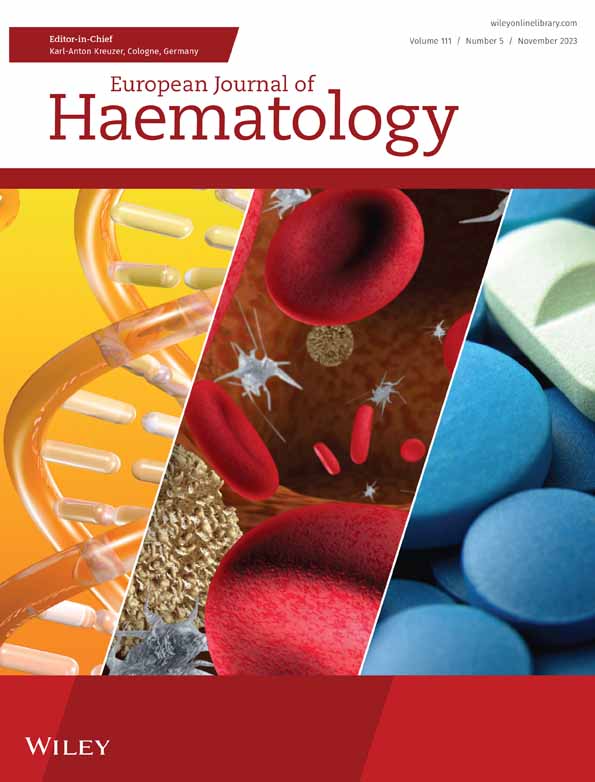Epidemiology and clinical outcomes of light-chain amyloidosis in Sweden: A nationwide population-based study
Michael Grövdal was in Janssen-Cilag at the time this research was performed.
The data in this manuscript were presented in part at the 64th American Society of Hematology Annual Meeting.
Abstract
Objectives
This study evaluated data from six Swedish national registries to fill current evidence gaps on the epidemiology, clinical burden, and overall survival (OS) associated with light-chain (AL) amyloidosis.
Methods
Patients newly diagnosed with AL amyloidosis were identified using six linked Swedish nationwide population-based registers. For each case, individuals from the general population were selected and matched with a maximum ratio of 1:5 based on age, sex, calendar year, and county.
Results
846 patients newly diagnosed with AL amyloidosis and 4227 demographically matched individuals were identified. From 2011 to 2019, annual AL amyloidosis incidence increased from 10.5 to 15.1 cases per million. At baseline, patients with AL amyloidosis had a significantly higher disease burden including higher rates of cardiac and renal failure relative to the comparison group. Among patients with AL amyloidosis, 21.5% had incident heart failure and 17.1% had incident renal failure after initial diagnosis. Median OS for patients with AL amyloidosis was 56 months versus not reached in the matched general population comparison group.
Conclusion
The incidence of newly diagnosed AL amyloidosis in Sweden increased over time with AL amyloidosis being associated with a higher risk of cardiac/renal failure and all-cause mortality compared with the general population.
CONFLICT OF INTEREST STATEMENT
Ulf-Henrik Mellqvist has received honoraria from Janssen and Celgene; Qian Cai is a current employee of and equity holder in Janssen; Laura L. Hester is a current employee of and equity holder in Janssen; Michael Grövdal was employed by Janssen at the time of the study; Jakob Börsum is employed by SDS Life Science, Sweden; Iffat Rahman is employed by SDS Life Science, Sweden; Eric M. Ammann is a current employee of and equity holder in Janssen; Markus Hansson has received lecture honoraria from Janssen and Celgene.
Open Research
DATA AVAILABILITY STATEMENT
The data sharing policy of Janssen Pharmaceutical Companies of Johnson & Johnson is available at https://www.janssen.com/clinical-trials/transparency. As noted on this site, requests for access to the study data can be submitted through the Yale Open Data Access (YODA) Project site at http://yoda.yale.edu.




